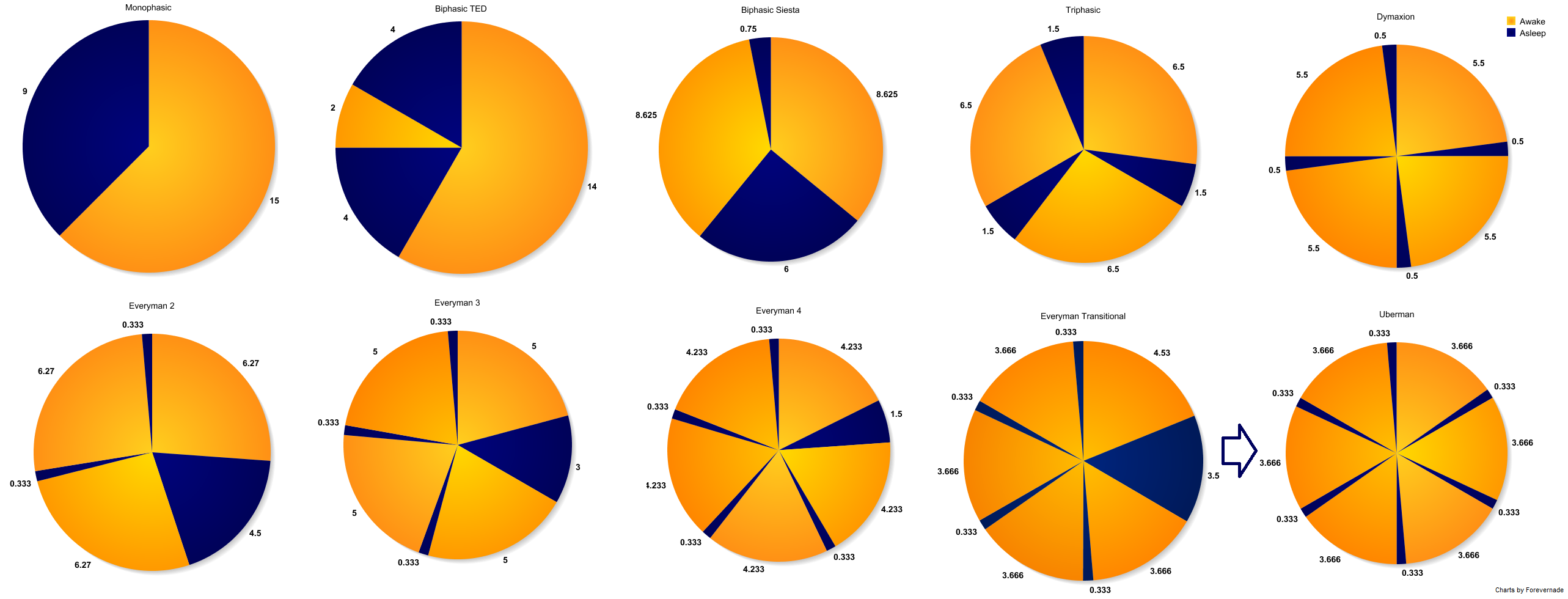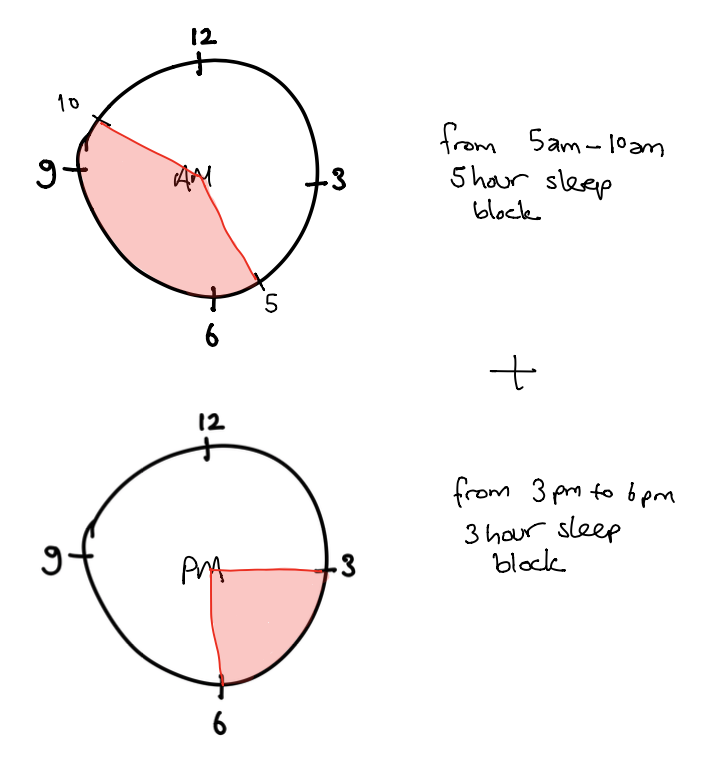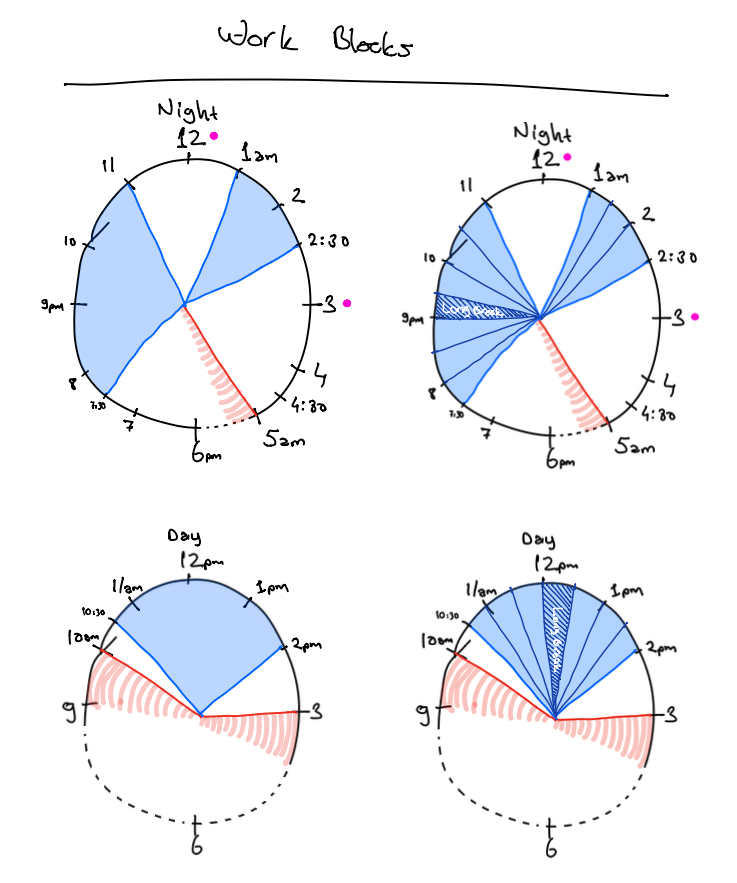Working from Home as a Father and Sleep in Biphasic or Polyphasic Cycles
For last 2 years, we have re-structured our company and teamwork process to become very (digital) nomadic. We have reconfigured all of our communication and project management processes to be remote-friendly. In fact, 7 out of 10 of our team members work completely remote. 2 of the team members that I’ve been working for last 2 years that I haven’t met in person 😊
I took parental leave from my company last few weeks and now I’m back to work. Before I was fully coming back, I was trying to figure out how my early baby-care schedule will be working out with my work schedule.
First I re-read some of the old topics that I used to research about sleep patterns, work and focus management experiments I used to do. I’ll talk about them in this post. Then I started to create some alternative ways to define work, baby care and sleep blocks around the clock. This planning can get so anal if you want to. I kept it logically working with my existing baby-care schedule that I adapted last few weeks (since the babies arrived). Now, let’s dive into them.
Thinking about sleep schedule
Sleep is probably the #1 topic for new (or repeating) parents when it comes to newborn or young babies. I think people are doing this wrong for uncontrolled reasons. Having required working on certain hours definitely makes this harder to manage because if you have a full-time work that required you to be on-site or on specific hours, you don’t have any option to work and have to be concentrated within those hours and continue doing your baby care shift at evening, night.
Since I have the luxury to define my own hours of when to sleep, when to be awake, when to be working and when to be resting, I approached this from the “mad scientist” mindset. This actually comes from the “creative” or “scientific” geniuses that are well known in living or experimenting with alternative “sleep patterns”.
For people are foreign to the topic, there are very analytical methods of different ways to plan your “resting” hours for your day. Sleeping is not always necessarily has to be 1 block of time for 8 hours of sleep for everybody. A lot of people does multiple blocks of sleeping. Well-known example of this is “siesta” in Spanish/Italian/Latin cultures. This falls under biphasic sleep (twice daily). But there are more challenging and weird versions of this pattern as known as polyphasic sleep pattern (more than 2 times a day). The main reason for many people trying alternative sleep pattern is to decrease total hours of sleep and provide similar/enough resting time for the body, so you can save extra hours to live longer days.
This is why many scientists or creatives try these patterns to get more hours of working/thinking/creating for their peak creative years. Some of the well knows are Da Vinci, Edison, Tesla, Churchill, Benjamin Franklin, Thomas Jefferson. There are many ways to do this alternative sleep patterns but there are know models:

To learn more about polyphasic sleep patterns: https://www.polyphasicsociety.com/polyphasic-sleep/overviews/
So here is my formula that falls under Biphasic Sleep Pattern that I worked out with my own schedule:

Thinking about work schedule
Our team works in different timezones from different continents and with our clients being almost on the other side of the planet, everybody works in their own hours except our team synchronizes once every day at 10:15am EST. We do a very short standup usually averages around 5-6 minutes. Other than this we only focus on the deliverables and weekly milestones that are usually set up at the beginning of the week. Rest of the week, we keep collaboration between team members based on people’s availability without a strict model.
This allows me to define my own work hour blocks and breaks that I want to work at. So based on the splitting my sleep, I split my work hours into 2 main blocks with a long break in each work hour blocks. So I designed 4 blocks of hours on the remaining hours of the sleep to focus on my work.
The drawing below shows the work blocks and their sprints in it. I’ll talk how I think about these sprints when I sit down to work below.

How to create focus in work hours since baby-care can be super distracting
This is pretty much how to focus, how to plan your own time and this topic itself is a separate topic to cover with many alternative methods. I’ve been working in tech almost 15 years now and I’ve experimented with many many methods including the ones touches to the project management, provides team focus and better collaboration. Last few years the methods that is remote work friendly become more appealing for me.
I like the pomodoro framework with adding few extra tools and adjusting the strict-pomodoro with few changes. This was a model I worked many years ago and we did the team-pomodoro for a while couple years ago in our team with busy lights and team dashboards that plays well with our adjusted-Kanban style project management.
So, essentially I split my work hours to pomodoro blocks. Which is 25-minute work + 5-minute rest (30 minutes) sprints that gives me 15 pomodoros a day. Pomodoro is just a mental checkpoint for me. To me more important to think about, how to minimize distractions. With many “screens” that we carry and wear, it becomes so much easier to get distracted even if you lock yourself in a room to work. Below, few tips I follow when I execute my pomodoros.
-
No mobile device to be vibrating, flashing screen or making sounds while working in pomodoro. A simple way to do this is, disable your notifications - using don’t disturb on mobile phones is the easiest way to do this. Put your phone/tablet etc facing screen down on the table is enough way to achieve this. Don’t use wearables that vibrate - or disable everything. I only use apple watch in airplane mode for the timer.
-
Define with pomodoro blocks that you will use communication tools, email responding, slacking, trello, social network etc… Only allow yourself to use these apps/sites. Use a tool to restrict your access to social networks, email sites even apps to use on your mac/windows. I use “Focus” app to block distracting apps and sites that show an alert even if I forgot and try to open these apps or sites.
-
Stop when pomodoro ends. 5-minute breaks are essential and don’t look at the screen on your break. Drink water, stand up, lay down on the couch but don’t interact with screens while on your short break. Use a visual or strong vibrating wearable for your pomodoro to make you annoyed if you don’t walk away from the computer. I use apple watch and it’s basic timer to get me very very aware of the timer is up with haptic feedback. I tried jawbone up and other alarms - phone alarm or pomodoro timers on mac. Nothing is as strong as my solution for me.
Related Posts
- 4 min readHow Markdown-Based Blogging Changed How Much I Write
- 8 min readMy Notion GTD and Prioritization Framework + Template
- 4 min readBest GTD method for geeks - Todo.txt
- 11 min readTaming Claude Code
- 4 min readHaving reliable internet while travelling every corner of the world
- 2 min readTime to take a break from your computer
Share